#african diasporic
Text
What's The Difference Between A Blockbuster, Road Opener and Uncrossing?

Let's start with a uncrossing.
Uncrossing: Is where someone has put something on you or a negative energy of a person is causing a negative effect in your life and the uncrossing will undo all of that.
A Road Opener: This will clear away blockages. When we take a different direction or unexpected path like a left turn onto another road this helps take us back on the original path. It can also help rid the blockages thats be in our way. [Example] If you ask God or the universe for something and you constantly squander those blessings you can lose them and the universe don't want to give help any more then a road opener can help with that.
Last we have the Blockbuster.
Blockbuster: This can help change your course in life, this can put us on the path that maybe we're weren't supposed to be on but really really wanted it to be. [Example: A career, you have a job/career and always wanted to do something else and you know how to do it this working is for that]
#like and/or reblog!#spiritual#google search#southern hoodoo#traditional hoodoo#conjuring#follow my blog#hoodoo#voodoo#Blockbuster#Uncrossing#Road opener#traditional rootwork#southern rootwork#rootwork questions#ask me anything#subscribe for more#african spirituality#african diasporic
17 notes
·
View notes
Text
Tag yourself!
{made with the Ancestors and Great Spirits of the African Diaspora in mind, here's what I associate with each day of the week and the children of the diaspora born therein:
Monday's child is fair of face
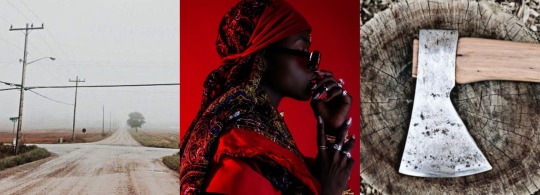
Tuesday's child is full of grace
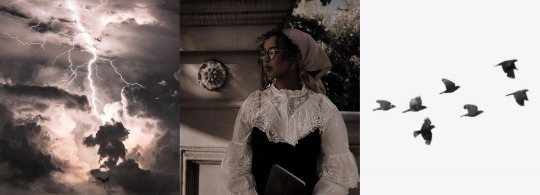
Wednesday's child is full of woe
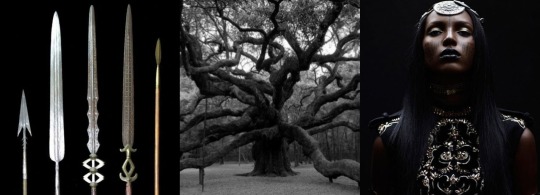
Thursday's child has far to go

Friday's child is loving and giving
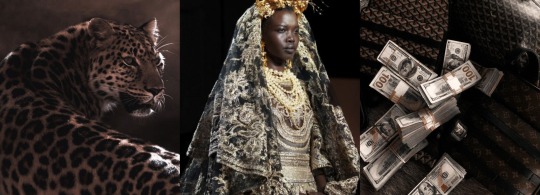
Saturday's child works hard for a living
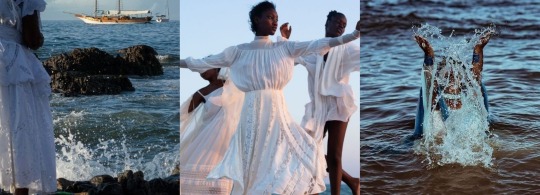
And the child born on the Sabbath day
Is bonny and blithe, good and gay.
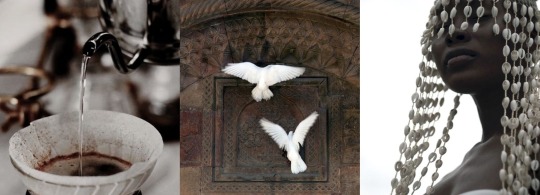
Monday: masters of finding new roads and moving forwards, tearing down blockages, trailblazers and warriors. Artists of all kinds, writers, poets, singers.
Tuesday: embodiment of thunderstorms, winds, omens, they're powerful conjurers with hot hands, always busy, always moving. Often times scholars, historians.
Wednesday: defenders, protectors, of humanity and nature as a whole. Warrior spirits at their core, but also great diviners and mediums.
Thursday: eloquent muses of the arts of love and war alike, great beauties who lead armies with equal charm and force. Sweetening, love and luck workings come easy to them.
Friday: personification of abundance and status. A commanding presence. Building legacy, great manifestors and conjurers, specially for work and finances.
Saturday: guardians of waters and the beyond. Community leaders, gifted healers, divine messengers. Carrying all the wisdom of the Elders and Ancestors.
Sunday: priests and priestesses that defy status quo, very old Ancestors coming back to reshape and rebirth reality. They will enter your life and purge every aspect of it.}
#Hoodoo#Rootwork#Conjure#Black Conjure#African american conjure#Hoodoo aesthetic#Hoodoo academia#I've had this in my drafts for so long!!!#enjoy :')#ATRs#ADRs#African Traditional Religions#African Diasporic Traditions#African Diasporic Religions#African Diaspora#afrolatine#afrolatinos
338 notes
·
View notes
Text
The only people who benefit when black people and jews are divided are white supremacists
#research at my job rn is focused on the time frame at twitter immediately after kanye said all that stuff#so im having to read the absolute worst takes ever#about bs that he was saying at the time#and a lot of people were really exposed to these antisemitic conspiracy theories through kanye#and it just makes me really fucking sad idk#we are stronger when we are together#like jews have always been at civil rights rallies and fighting for equality of all kinds#we both experience discrimination and persecution from the same people#it isnt a competition white supremacists hate us too#a lot of the antisemitism im seeing from this sample set is the same conspiracies that have been around for thousands of years#about jews controlling minorities#so that they can... idk control the world and oppress white people?#but i cant recall a time where minorities actually started to believe they were being controlled by jews before this sample set#it hurts it really does#anyway ill always support black people and jews and i dont have to choose between the two#i took a course with some incredible professors that are like the forefront academics of african american and african diasporic studies#called the intersectionality of jewishness and blackness#our histories arent just parallel#theyre intertwined#anyway ill get off my soapbox i just have to read this bullshit for my job and it made me upset lol#jumblr#judaism#frumblr#jewblr
55 notes
·
View notes
Text
As African Americans, our ancestors had no other choice but to accept and embrace creativity, flexibility, innovation, cleverness, etc.. These are the building blocks of Hoodoo and AA culture as a whole. If they had practiced the same way their ancestors did in Africa, we wouldn’t have made it. If they had practiced the same way our cousins did in Cuba/Haiti/Brazil/DR/Trinidad, we wouldn’t have made it. If they had incorporated the Orishas, Lwa, Akom, or other higher spirits in Hoodoo, we wouldn’t have made it. Respect that and stop tethering these ancient deities into our spiritual system.
#hoodoo#african traditional religions#african diasporic religions#rootwork#orishas#Lwa#ancestors#african spirituality#atr#adr#santeria#orisha path#voodoo#vodun#ifa#closed religions#closed practice#adosreligion#African American culture#african diaspora#ados
127 notes
·
View notes
Text
Imagine feeling you have the right to control someone’s racial, cultural, and religious identity.
#I refuse to be stuck here#I refuse to deal with this another year#although I attended a Madrassa as a kid#as a later teenager I wasn’t in a mosque as frequently and if I didn’t have tumblr#and seek#ing out other Muslims I would’ve never learned the importance of being in contact#we’re 1% of the U.S. and from a convert family I don’t really have any ties to my community#so it is thanks to#random internet Muslims who are Asian Arab Diasporic and Continental Africans who actually cared abt me and didn’t make me feel ignorant#and didn’t make me feel unwanted. I’ll never forget the kindness from my community because I think of how easily my own mother can bash#the Muslim community because she really does not believe she’s part of it. it’s easy for her to distance herself from it#because she didn’t grow up getting her hijab ripped off or being called a terrorist#it was just something her kids endured. but instead of moving us or not forcing us into hijab#she ignored it#I see why my (now deceased) brother was so angry by her. she has no guilt or shame. and she should#I’m tired of carrying her burdens for her when she keeps adding onto mine
6 notes
·
View notes
Text
Inside the Petronio Alvarez Festival, celebrating Colombia's music and culture : NPR
Click and listen
4 notes
·
View notes
Text
.
#complicated situations complicated world there is context however.#saw someone claim that the tunisian jewish community didn't face antisemitism.#as a point about jewish diasporism and international jewish communities and antizionism#a quick google search will tell you that jews living in territories occupied by vichy france did not have a good time!#even before direct nazi invasion!#just because north african jews weren't all sent to concentration camps doesn't mean............#and that's not getting into the ways in which#yes#anti-israel sentiments can and have been taken out on jewish communities in the MENA region#feeding a vicious cycle#like. obviously it's complicated! but the fact that there is still a tunisian jewish community doesn't mean!#they have never faced violence!#ignoring the ways that wwii and the spread of nazi germany impacted jews in regions other than europe is. in fact.#a form of holocaust denial.#if we want to counter zionism we need to be accurate. even when reality is inconvenient or painful.#radical diasporism can and must reckon with the fact that#the feelings of fear and insecurity#the conviction that jews will never be safe in the diaspora#*come from somewhere*#and there is something to be said about how the israeli government worked with governments across the mena region to displace their#jewish populations#and what that says about zionism.#and there is something to be said about how the violence of the israeli state feeds antisemitism and contributes to violence against#diaspora jews#drafting us involuntarily into a war we don't want to fight.#and there are many things to be said about how the impact of the holocaust on mizrahi and sephardic jews#have been completely erased from historical narrative.#there are so many things to be said. and we have to say them. but we have to be able to confront the truth.#i am going insane over here.
6 notes
·
View notes
Text
Pafwa mwen kon ap tande pitit diaspora pale e mwen mande tet mwen, “Ki pati Ayiti paren ou soti?”
#haitian#Haitian American#haitian creole#creole#kreyol#kreyol ayisyen#ayisyen#diaspora#diasporic#Haitian diaspora#african diaspora#black diaspora
15 notes
·
View notes
Text
youtube
2 notes
·
View notes
Text
I CANNOT STRESS THIS ENOUGH
Quit idolizing these mf celebrities!!!!
#atr#hoodoo#vodun#voodoo#african traditional religions#diaspora#diasporic#african diaspora#diasporic traditional religions#music
4 notes
·
View notes
Photo

“
During the first half of the twentieth century, a group of collectors and creators dedicated themselves to documenting the history of African American life. At a time when dominant institutions cast doubt on the value or even the idea of Black history, these bibliophiles, scrapbookers, and librarians created an enduring set of African diasporic archives. In building these institutions and amassing abundant archival material, they also reshaped Black public culture, animating inquiry into the nature and meaning of Black history.”
Scattered and Fugitive Things tells the stories of these Black collectors
(via Scattered and Fugitive Things | Columbia University Press)
#african american history#scattered and fugitive things#black collectors#african diasporic collectors#Laura E. Helton
1 note
·
View note
Text
Gran Bwa. Vodou Spirit Of The Forest.

This lwa of one of my favorite I'm going to speak a little about him.
Gran Bwa is a big part of all forms of voodoo. He is the lwa of the forest, he's a healer who has power of the sacred forest. He is a powerful lwa. He may or may not be of Congolese origin originally, but some believe have originally been a Taino spirit incorporated into the Vodou pantheon.
What Nation Is Gran Bwa From? He is from the Rada Nation, Not Petro like the internet says. He is a patron of initiations. Gran Bwa is considered the Tree of Life that connects the celestial realms with those of the living and the dead. I won't say he is the ruler of the forest but it's protector and you can find him their or at any tree if needed.
Gran Bwa can help you make baths and washes,wanga bottles, packet etc. He is a great healer who can bring luck to you and he would come to your defence. He can break strong black magic and curses and cleanse negativity. He can help you connect to your ancestors and your spiritual home in Vodou.
Gran Bwa is the Shade tree, Giving tree, Medicine tree, and the Hanging tree all at the same time. Tell him what you require and he'll help you.
If you follow the Catholicism path he is synchronize with Saint Sebastian.
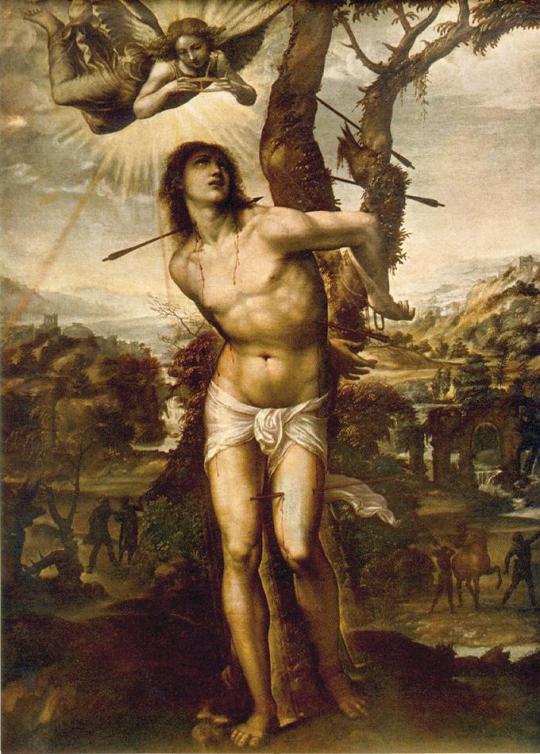
St. Sebastian photo.
In other African religion like Puerto Rican Sanse, he is St. Sebastian or St. Jude.
Even thou voodoo spirit aren't saints he knows who your truly speaking too when you call apon him.
ANIMALS: He protects all forest animals.
COLOURS: Green or Red.
DAY: Saturday.
ALTAR: You can hang offerings from a any tree branch or lay them at the foot of the tree. Your altar is fine also.
Where To Find Him: You can find him in any forest area. Are if you have a place with a large old tree or a sacred tree (Eggun Tree) you'll find him their.
OFFERINGS: He likes green leaves and herbs, even braches if it's picked from a forest. Tobacco, Rum.
#Gran Bwa#vodou lwa#Voodoo lwa#louisiana voodoo#haitian vodou#vodou deities#vodou loa#google search#like and/or reblog!#follow my blog#Healing spirit#african diasporic#african spirituality#Spirit energies#ask me a question#ask me anything#message me
10 notes
·
View notes
Text
Let's talk about San Baltasar, the Wise King, Saint of Afroargentines.
I think it's extremely interesting how one of the biggest afrodiasporic cults native to Argentina is that of El Santo Negro (the Black Saint) St. Balthazar, the Wise King. Other syncretic saint cults make mention to african deities or saints with titles such as "The Queen of Rivers" or "The Queen of the Sea", making the deities involved easily identifiable, but this cult in particular is one of the most widespread across the black population of Argentina and yet the most elusive in regards to who may be behind the mask. At least, until you pay attention to the details.
The Church first introduced the cult of Catholic Figures and Saints such as San Baltasar (King Balthazar) or San Benito de Palermo (St. Benedict of Palermo, the Moor) as a way to control the enslaved population politically and culturally. Although their goal was to dissipate african religions and install catholicism among them instead, they underestimated black argentines: after much effort, the church allowed the enslaved faithful to organize socially and politically and perform dances, drumming and singing for the saints of their formed Cofradía (similar to a congregation, but including social and political structures within it, naming a king and queen or a president and other culturally and politically significant roles). Thanks to the passing down of african culture and customs through these organized societies and the syncretism within them, we can proudly say the church failed in their attempts. The african spirits are very much still an integral part of afroargentines' lives. Today, although it has spread across the country and beyond, the center of this cult is in it's origin, the capital city of Corrientes, Argentina, in a neighborhood called Cambá Cuá.
The cult to San Baltasar is clearly african in origin, although with indigenous (guaraní) influences, such as calling the saint Santo Cambá/Kambá (Black in guaraní language), calling his statues Cambára'angá (guaraní for Black Figure), and some dancers dressing up as indigenous figures like el pombero, among other things. Thus, it is an afroindigenous cult, developing amongst mixed descendants of african enslaved peoples and guaraní natives. The cult is also a local expression of the most african of customs: ancestral veneration. The festivities honor not only the Saint himself, but all the black ancestors before us who are present in pictures at the altar, and answer to the call of the drums. The color red, that covers the saint and adorns his followers, is the color of warriors and protection in African Traditional Religions. He's offered food and drink (such as wine and traditionally made sangría), and most importantly dance and drums. He is invoked and honored, along with the ancestors, through drumming and dancing, through La llamada a San Baltasar and Saludos de Tambores a los Santos Cambá (Calling Saint Balthazar and Drum Salutations to the Black Saints).
His festivities, held in Corrientes around Epiphany, from January 1st to the 6th, include dancing afroargentinean rhythms such as diverse forms of candombe and samba. Particularly, he was traditionally honored with a dance called bambula, a form of ring dance where women move in short and slow steps, barely lifting their feet, while men jump in the air, and where one singer sings a phrase that is then repeated or answered by the others present. This kind of dance is native to Congo and Angola, and widely practiced by enslaved people and their descendants in the Southern United States, the Caribbean, Brazil, Argentina and Uruguay. The music used to this day to petition favors, to invoke his spirit into his image and even dispel or call thunderstorms or other natural phenomena, is called charanda and includes drums, guitars and triangles. Just like in other afrodiasporic devotional and resistance dances, these dances involve Kings and Queens of the dance, a hierarchy of drummers including those called Master drummers, and a hierarchy of the drums themselves as Chico, Repique and Piano.
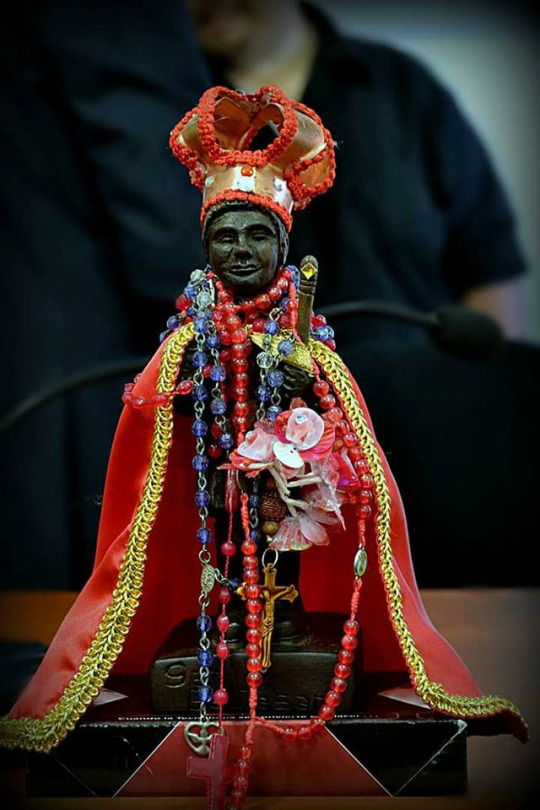
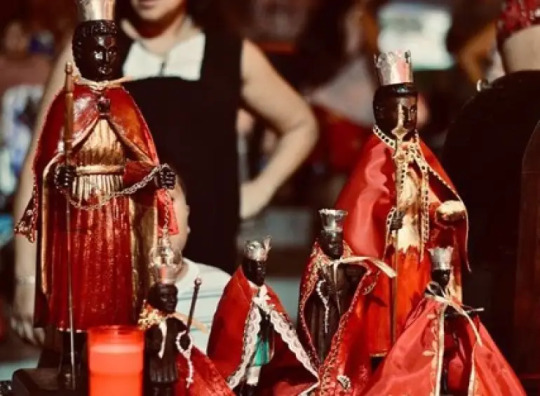
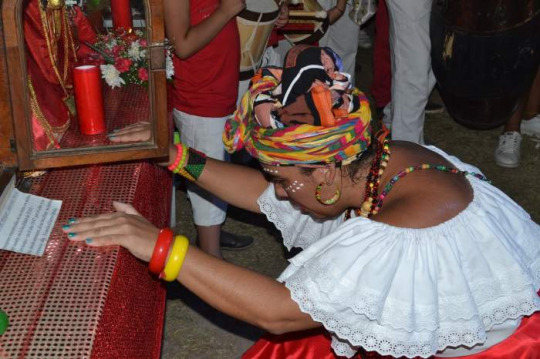


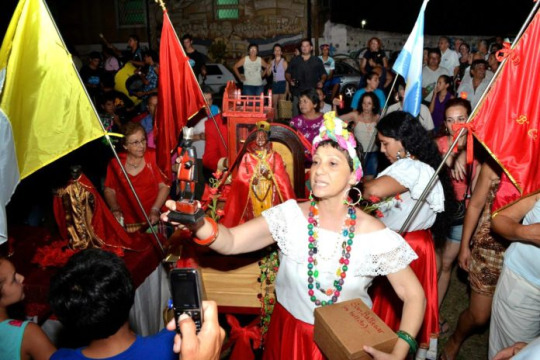
If you compare him to Xangó...
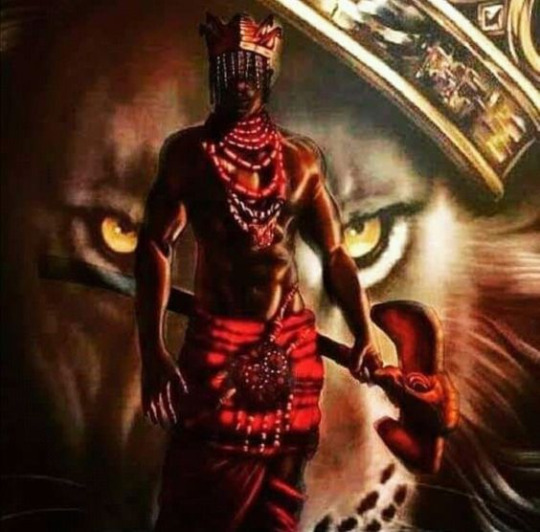
He carries a double-headed axe. He's often depicted wearing a crown. His colors are, surprisingly, also white and red, with gold accents. Also a King and a warrior, also associated with thunderstorms and fire, drums and dance. His followers also wear white and red beaded collares. Ringing any bells...?
Now, I am not saying they are the same Spirit, but there is an undeniable resemblance. You come to your own conclusions. It's kind of obvious that this afrodiasporic cult stems from either (a) a hidden, veiled cult to the orisha(s) or (b) a syncretic cult to african deities (not only orishas but maybe other african spirits too). There is, after all, strong ties not only to Yorubaland but also to Dahomey, Kongo, etc. Just in this instance, the spirit may resemble an orisha but the rhythms and dance are from kongo, so there is much more to it than just one or the other. There is a culture of resistance born from the union of Nations through music, faith and tradition.
Sources:
None of the images here belong to me: San Baltazar and festivities [1,2,3,4-6] and Xangó [1]
Festividad de San Baltasar : performances artístico-religiosas de la cofradía de la ciudad de Corrientes, by Cavalieri, Ana Belén, Universidad Nacional del Nordeste. Facultad de Artes, Diseño y Ciencias de la Cultura, 2018. Available for download at [Link]
San Baltazar, Historias de Corrientes at [Link]
The bamboula Lineage at [Link]
The Orishas, Indiana University at [Link]
#ATRs#afroargentina#afroargentines#afrolatine#afrolatinx#afrolatino#black saint#black saints#st balthazar#st. Balthazar#San Baltazar#Santería#shangó#xangó#santeria#african diaspora#african traditional religions#african diasporic religions#african diaspora religions#ADRs#san baltasar
20 notes
·
View notes
Text
Mapping the (Post) Colonial Body: Confronting Colorism in the Indian Diaspora
Join Ms. Simran Juglal for a Deep Dive Discussion titled “Mapping the (Post) Colonial Body: Confronting Colorism in the Indian Diaspora” at the virtual Ronald E. Hall Conference on Colorism on August 17, 2023 and August 18, 2023.
Register today: Ronald E. Hall Conference on Colorism
Deep Dive Discussion Session: 1C
Date: Thursday, August 17, 2023
Time: 2:35 p.m. – 4:05 p.m. CST
Ms.…

View On WordPress
0 notes
Text
I feel like people have such a limited view of the Shoah as something that killed religious Jews living in Eastern Europe. Certainly, that’s the majority of Jewish deaths from a raw numbers perspective. But that narrow view erases so much suffering.
Imperial Japan was allied to the Nazis, so Jews in East Asia and the Pacific forced to flee or die as Japan expanded their empire. Fascist Spain was sympathetic to the Nazi cause, and it’s not like the Sephardic Jews could easily flee into France after 1940. The Axis powers had colonized Algeria, Iraq, Libya, Morocco, and Tunisia at that point, so North African Mizrahi Jews weren’t spared the horrors. While the US government didn’t directly kill Jews, they denied us refugee status during the Shoah, and they did nothing to prevent the spread of multiple US American fascist parties and white suprematist groups. The Vatican, unofficially allied with Fascist Italy, handed over the names and locations of Jews they had converted to Catholicism decades or centuries prior. Families who didn’t even know they were ethnically Jewish were dragged out of Catholic Churches during Mass and sent to slaughterhouses hundreds of miles away. There were precious few diasporic communities throughout the world where Jews were safe in the 30s and 40s.
The Holocaust spanned entire continents. The Holocaust was global.
Edit 04/02/24: This post wasn’t written about Israel, and you shouldn’t make it about Israel. In either direction. The Shoah should not serve as a justification for the unnecessary abuses of the Palestinian people by the Likud government. Simultaneously, the Shoah was not a “lesson” to be learned by Jews, you cannot make a reasonable comparison between the Shoah and Gaza. This post is not about Israel and Palestine. Do not make it about Israel and Palestine. The deaths of our ancestors are not a tool with which you can make your argument.
2K notes
·
View notes
Text
I really do wanna look into the history of Black folks that are non African and not of the African diaspora either.
#nix meows#black history month#it is still wild to me that that one nigga really came onto one of my posts saying that the other groups racialized as Black#aren't Black b/c they aint African/African diasporic#like? white people didn't give a damn where a nigga came from when they decided who was Black and who was white and everything else#as far as ye old crackers were concerned if it looked like a nigga its a nigga
1 note
·
View note